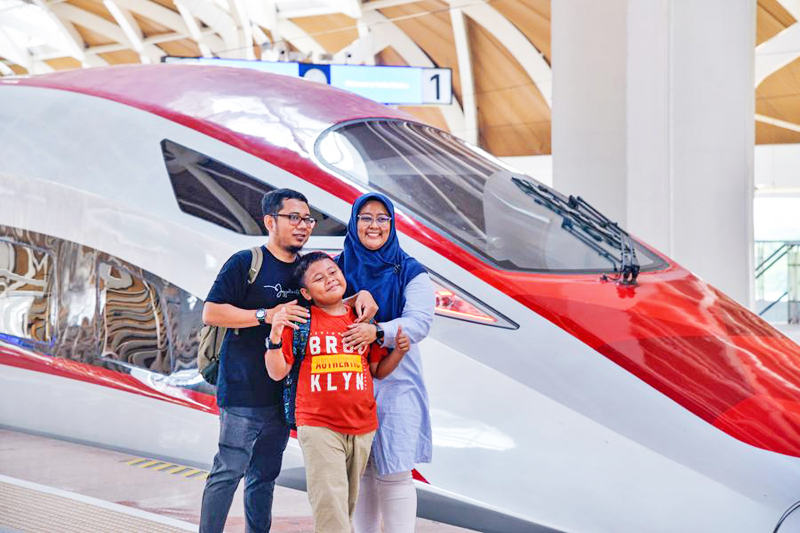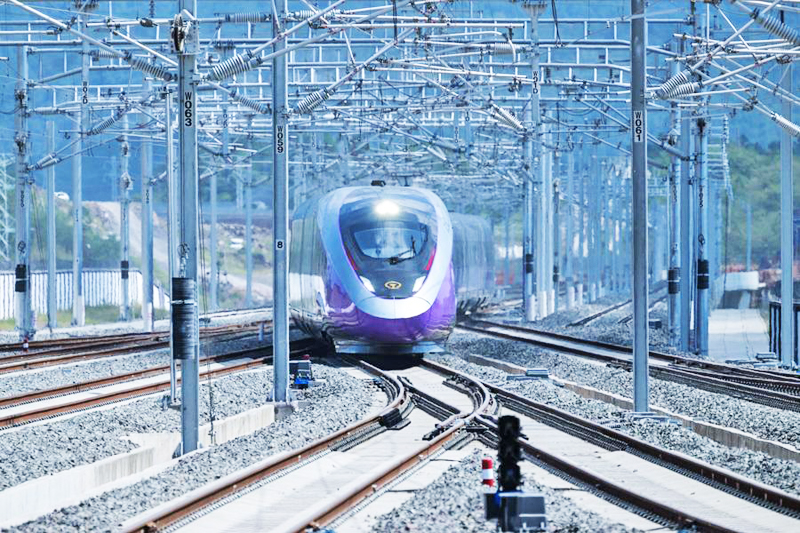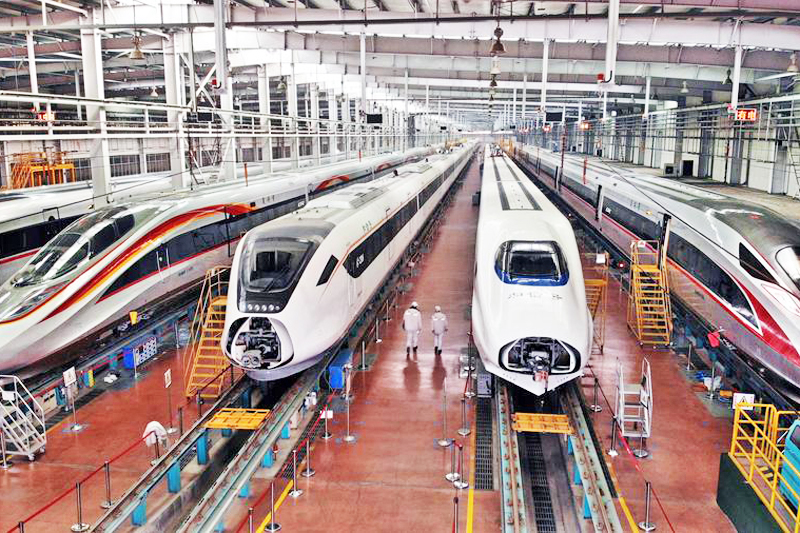BEIJING – During the recent week-long holiday in conjunction with Malaysia’s National Day, high-speed train stations across China continued to be busy with a flood of passengers.
Some lined up orderly before boarding the train, while others surfed their smartphones or used laptops while waiting for incoming calls.
China’s railway sector has seen an increase in passenger traffic recently as many travelers return from their holiday destinations. A total of 13,103 train journeys were operated on the day, including 1,705 additional trains to meet high demand, marking the highest daily operating capacity in history, according to China State Railway Group Co Ltd.
China now has the world’s largest high-speed rail network to meet the demand for comfortable and convenient travel. The total number of these networks now exceeds 45,000 kilometers, with Fuxing trains operating in 31 regions across the country.
CHINA RAIL INNOVATION
Once upon a time, the green slow train became the main memory in the lives of many Chinese people. However, since the opening of the Beijing-Tianjin Intercity Railway in 2008, with a design speed of 350 kilometers per hour, the rapidly expanding high-speed rail network is now the backbone of transportation in the world’s second largest economy.



Now, the journey from Hong Kong to Beijing takes just over eight hours by high-speed train. A passenger from Canada with the username Xiaohongshu, Lao Han, shared on social media last April that he enjoyed the different scenery along the journey from southern to northern China. Previously, the journey between the two cities took more than 24 hours.
The travel experience is not only limited to the Hong Kong-Beijing route. Many bullet trains in China now operate at a maximum speed of 350 kilometers per hour. CRRC Changchun Railway Vehicles Co Ltd in Jilin, northeastern China, has long contributed to accelerating the country’s rail travel options with innovative products.
Since the 1990s, the speed of China’s railways has increased many times, with the company introducing the country’s first aluminum subway and monorail trains. In July 2024, CRRC introduced a high-speed bogie capable of meeting the requirements of an electric multiple unit (EMU) at a speed of 400 kilometers per hour.
BOGI TECHNOLOGY
High-speed trains Bogi serves as a train movement system and is a core component of rail vehicles. “It acts like a ‘leg’ for the EMU train,” explained Zhou Dianmai, senior engineer at CRRC Changchun Railway Vehicles. Trains with bogies can move faster and more stably, in addition to reducing noise.
The bogie also makes the train 20 percent lighter, reduces energy consumption by 15 percent and reduces rail wheel wear by 30 percent. Maintenance costs throughout the life of the train are also reduced by 15 percent.
In addition, the big data analytics platform at CRRC’s bogie production plant provides important information, such as management costs and resource utilization in real time, which supports product management and design. “This platform increases the utilization rate of equipment by 10 percent and reduces operating and management costs by 10 percent,” said Fuxing’s deputy chief train designer, Zhu Yan.
INTERNATIONAL LEVEL
China’s high-speed rail is now considered the country’s ‘calling card’ and is gaining popularity around the world. The Jakarta-Bandung high-speed train in Indonesia, which started operations in October 2023, has carried more than 4 million passengers as of July 2024. It is the first overseas high-speed rail project that fully uses Chinese systems and technology.
The China-Laos Railway, a collaborative project under the Belt and Road initiative, will start operating in December 2021. “Before the China-Laos Railway, traveling from Vientiane to Mongla took two days by car,” said a passenger.
“Now, the journey only takes five hours,” he added.
In Europe, the Belgrade-Novi Sad High-Speed Railway project in Serbia has carried nearly 8.8 million passengers since 2022. At the Third Belt and Road International Cooperation Forum in October 2023, CRRC Changchun Railway Vehicles signed a contract to introduce Chinese bullet trains to Serbia.
To date, CRRC products have been exported to 23 countries, with a business model that includes services throughout the vehicle’s life cycle. The company also established 11 branches internationally.
“China’s high-speed railways feature advanced technology, strong brand influence and fast-growing innovation,” said Tao Guidong, CRRC scientist. – Xinhua

